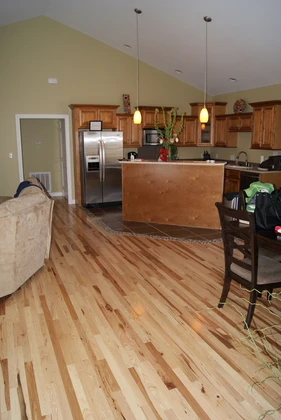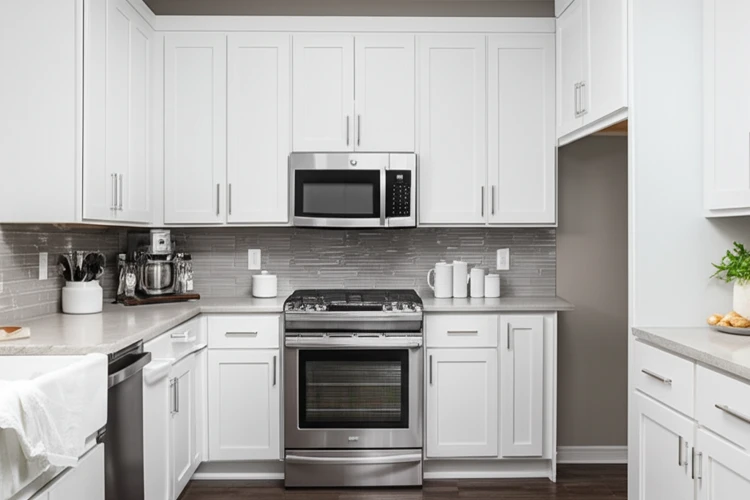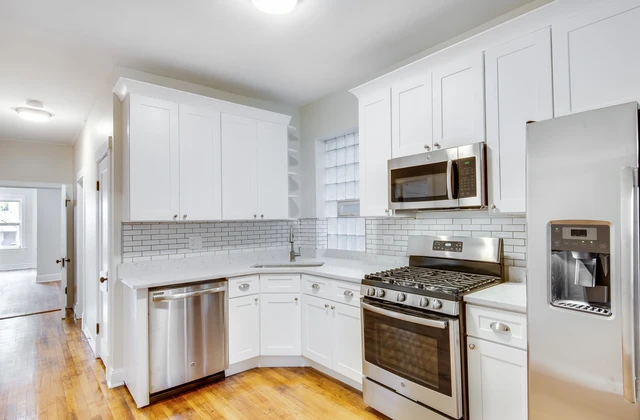Disclaimer: As an Amazon Associate, I earn commission from qualifying purchases.
Embarking on a kitchen remodel is an exciting yet daunting task. Homeowners often wonder, “How much does it cost to remodel a kitchen?” The answer varies widely depending on several factors, including materials, appliances, and labor. This blog aims to provide expert-backed insights and practical solutions to help you navigate the complexities of kitchen remodeling.
Factors Affecting Kitchen Remodeling Costs
Understanding the factors that influence kitchen remodeling costs is crucial for setting a realistic budget. Here are the key elements to consider:
Materials
The choice of materials significantly impacts the overall cost. Key components include:
- Cabinets: Stock cabinets are the most affordable, but semi-custom and custom options offer more flexibility and quality.
- Countertops: Options range from budget-friendly laminate to high-end materials like granite and quartz.
- Flooring: Vinyl and laminate are cost-effective, while hardwood and tile can be more expensive.
According to HomeAdvisor, the average cost for kitchen cabinets ranges from $2,000 to $10,000, while countertops can cost between $1,500 and $6,000.
Appliances
Appliances are another significant expense. Consider the following:
- New vs. Used: Purchasing new appliances ensures reliability and often better energy efficiency.
- Energy-Efficient Options: These may have a higher upfront cost but can save on utility bills in the long run.
A full set of new appliances can cost anywhere from $3,000 to $10,000, depending on the brands and features selected.
Labor
Labor costs can vary widely based on whether you choose to DIY or hire professionals:
- DIY: Offers significant savings but requires time, skill, and patience.
- Professional Help: Ensures quality workmanship but adds to the overall cost.
Professional labor costs can range from $3,000 to $10,000, depending on the scope of the project.
Setting a Realistic Budget for Kitchen Remodeling
Setting a realistic budget is essential for a successful kitchen remodel. Here’s a step-by-step guide:
Determine Your Financial Capacity
Assess your financial situation to understand how much you can afford. This includes savings, loans, or home equity lines of credit.
Prioritize High-Impact Areas
Focus on areas that will have the biggest impact on your kitchen’s functionality and aesthetics. This might include replacing old appliances, updating countertops, or improving the layout.
Allocate Funds for Contingencies
Always set aside a portion of your budget for unexpected costs. Experts recommend allocating about 10-20% of your total budget for contingencies.
For detailed financial planning, tools like those provided by Kiplinger can be invaluable.
High-End vs. Budget-Friendly Kitchen Remodeling
Whether you opt for a high-end or budget-friendly remodel, understanding the differences in costs and quality is essential.
High-End Materials and Appliances
High-end remodels typically involve premium materials and top-tier appliances. These can include:
- Custom Cabinets: Often made from high-quality woods and designed specifically for your space.
- Luxury Countertops: Materials like marble, quartz, or exotic granite.
- High-End Appliances: Professional-grade ranges, custom refrigerators, and smart technology.
A high-end kitchen remodel can easily exceed $50,000, with some projects reaching $100,000 or more.
Budget-Friendly Alternatives
Budget-friendly remodels focus on cost-effective solutions without sacrificing functionality. Options include:
- Stock Cabinets: Pre-fabricated cabinets that are readily available and more affordable.
- Laminate Countertops: Durable and budget-friendly, though less luxurious than natural stone.
- Refurbished Appliances: Purchasing used or refurbished appliances can save a significant amount of money.
A budget-friendly remodel can be achieved for as little as $10,000 to $20,000, depending on the size and scope of the project.
| Component | High-End Cost | Budget-Friendly Cost |
|---|---|---|
| Cabinets | $20,000 – $60,000 | $2,000 – $10,000 |
| Countertops | $5,000 – $15,000 | $1,500 – $3,000 |
| Appliances | $10,000 – $30,000 | $3,000 – $7,000 |
Kitchen Layouts and Their Impact on Cost
The layout of your kitchen significantly affects both functionality and cost. Here are some common layouts and their implications:
Open Floor Plans
Open floor plans create a spacious, integrated living area. However, they can be more expensive to implement, especially if structural changes are required.
Galley Kitchens
Galley kitchens are efficient and cost-effective, particularly for smaller spaces. They typically feature parallel counters and are easy to navigate.
L-Shaped and U-Shaped Kitchens
L-shaped and U-shaped kitchens offer more counter space and storage. They can be more expensive than galley kitchens but are often worth the investment for larger families or entertainers.
Using architectural references and layout planning tools can help you determine the best layout for your needs and budget.
Cost of Kitchen Cabinets
Kitchen cabinets are a significant investment, so it’s important to understand the different options and their associated costs:
Stock Cabinets
Stock cabinets are the most affordable option. They are pre-manufactured and available in standard sizes. Costs typically range from $2,000 to $5,000.
Semi-Custom Cabinets
Semi-custom cabinets offer more customization options, such as different door styles and finishes. They usually cost between $5,000 and $10,000.
Custom Cabinets
Custom cabinets are tailored to your specific design and space requirements. They are the most expensive option, with costs ranging from $10,000 to $30,000 or more.
For detailed insights, refer to statistics from cabinet manufacturers and home improvement stores.
Countertop Materials and Their Costs
Choosing the right countertop material is crucial for both aesthetics and functionality. Here’s a breakdown of popular options:
Granite, Quartz, and Marble
These high-end materials are known for their durability and luxurious appearance. Costs range from $3,000 to $7,000 for granite, $4,000 to $8,000 for quartz, and $5,000 to $10,000 for marble.
Laminate and Butcher Block
Laminate is a budget-friendly option, costing between $1,500 and $3,000. Butcher block offers a rustic look and costs around $2,000 to $4,000.
For a detailed comparison, refer to industry publications and consumer reports.
Flooring Options and Their Price Points
Flooring is another critical component that can significantly impact your budget. Here are some popular options:
Hardwood
Hardwood floors are durable and add a touch of elegance. They typically cost between $8 and $20 per square foot.
Tile
Tile is a versatile and durable option, with costs ranging from $5 to $15 per square foot.
Vinyl
Vinyl flooring is budget-friendly and easy to maintain, costing between $2 and $10 per square foot.
For more information, refer to flooring industry reports and professional recommendations.
Appliance Upgrades: Costs and Benefits
Upgrading appliances can enhance your kitchen’s functionality and energy efficiency. Here’s what you need to know:
Energy-Efficient Appliances
Energy-efficient appliances may have a higher upfront cost but can save you money on utility bills over time. Look for the Energy Star rating when selecting appliances.
Smart Appliances
Smart appliances offer convenience and can be integrated with home automation systems. They typically come with a higher price tag, but the added functionality can be worth the investment.
For a detailed cost-benefit analysis, refer to data from Energy Star and appliance manufacturers.
Labor Costs: DIY vs. Professional Help
Deciding whether to DIY or hire a professional can significantly impact your budget. Here’s a comparison:
DIY Pros and Cons
DIY projects can save a substantial amount of money, but they require time, skill, and patience. The pros include cost savings and personal satisfaction. The cons include potential mistakes and the time commitment required.
Hiring a Contractor
Hiring a professional contractor ensures quality workmanship and can save time. However, it adds to the overall cost. Contractor costs can range from $3,000 to $10,000, depending on the project’s scope.
For tips on finding reliable professionals, refer to quotes from professional contractors and DIY guides.
Hidden Costs to Consider
Beyond the obvious expenses, there are hidden costs to consider when remodeling your kitchen:
Permits and Inspections
Depending on your location and the scope of your project, you may need permits and inspections. These can add several hundred dollars to your budget.
Structural Changes
Structural changes, such as removing walls or altering plumbing, can significantly increase costs. Always budget for these potential expenses.
Delivery and Installation Fees
Don’t forget to account for delivery and installation fees for appliances, cabinets, and other materials. These can add up quickly.
For transparent pricing information, refer to official documentation links and professional contractor quotes.
Sustainable Kitchen Remodeling Tips
Incorporating sustainable practices into your kitchen remodel can help reduce your environmental impact and save money in the long run. Here are some tips:
Eco-Friendly Materials
Choose eco-friendly materials like bamboo, recycled glass, or reclaimed wood for cabinets and countertops.
Energy-Efficient Appliances
Opt for Energy Star-rated appliances to reduce energy consumption and lower utility bills.
Waste Reduction Strategies
Implement waste reduction strategies, such as recycling old materials and minimizing construction waste.
For more information, refer to environmental studies and sustainable living publications.
FAQs
Q1: How much does it cost to remodel a kitchen on average?
The average cost to remodel a kitchen can range from $10,000 to $50,000, depending on the size of the kitchen, the materials used, and the extent of the renovation. High-end remodels can exceed $100,000.
Q2: Can I remodel my kitchen on a tight budget?
Yes, it is possible to remodel your kitchen on a tight budget by focusing on cost-effective materials, DIY projects, and prioritizing high-impact areas. Allocating funds for contingencies and using financial planning tools can also help.
Q3: What are the most expensive parts of a kitchen remodel?
The most expensive parts of a kitchen remodel typically include custom cabinets, high-end countertops, and professional-grade appliances. These components can significantly increase the overall cost.
Q4: How do I choose the right kitchen layout?
Choosing the right kitchen layout depends on your space, lifestyle, and budget. Open floor plans are great for spacious areas, while galley kitchens are efficient for smaller spaces. L-shaped and U-shaped kitchens offer more counter space and storage.
Q5: Should I hire a professional or do it myself?
Deciding whether to hire a professional or do it yourself depends on your skills, time, and budget. DIY projects can save money but require expertise. Hiring a professional ensures quality workmanship but adds to the cost.
Q6: Are there any sustainable options for kitchen remodeling?
Yes, there are several sustainable options for kitchen remodeling, including eco-friendly materials, energy-efficient appliances, and waste reduction strategies. These options can help reduce your environmental impact and save money in the long run.
Q7: How can I minimize hidden costs in a kitchen remodel?
To minimize hidden costs, plan thoroughly and set aside a contingency budget. Consider permits, inspections, structural changes, and delivery fees. Transparent pricing information and professional contractor quotes can also help.
Q8: What are the benefits of energy-efficient appliances?
Energy-efficient appliances can save you money on utility bills over time, reduce your environmental impact, and often come with rebates and incentives. Look for the Energy Star rating when selecting appliances.
Q9: How can I balance cost vs. value in a kitchen remodel?
Balancing cost vs. value involves prioritizing high-impact areas, choosing quality materials that will last, and considering the long-term benefits of energy-efficient appliances. Research and planning can help you make informed decisions.
Q10: What are some common myths about kitchen remodeling?
Common myths include the belief that DIY always saves money, that high-end materials are always worth the cost, and that professional help is always expensive. Addressing these misconceptions can help you make better decisions.
Conclusion
Understanding how much it costs to remodel a kitchen involves considering various factors, from materials and appliances to labor and layout. By setting a realistic budget, weighing high-end vs. budget-friendly options, and being aware of hidden costs, you can achieve a successful and satisfying kitchen remodel. Always prioritize research, planning, and seeking multiple quotes to ensure the best value for your investment.







